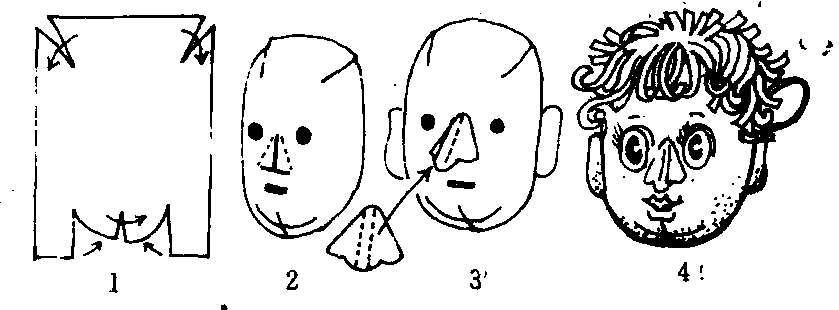人物面具Renwu mianju
在文娱节目表演中或化妆晚会上,为表演节目的需要,把面孔全部遮住,改变面貌特征的用具。人物面具的制作方法是,用16开白板纸,从上角斜剪两个开口,收缩粘接,作成额头状,将纸的下边平分四份剪开口和半圆,收缩粘接成下颌,做成面具纸盆后,挖眼、鼻、口孔,加粘鼻头、耳朵,作成人物面具原型。在面具原型上部可加粘帽饰,在面部原型的下部可粘贴纸穗状的胡须,彩绘面具,从两侧拴皮筋挂带,作成完整实用的人物面具。

人物面具
| 词条 | 人物面具 |
| 类别 | 中文百科知识 |
| 释义 | 人物面具Renwu mianju在文娱节目表演中或化妆晚会上,为表演节目的需要,把面孔全部遮住,改变面貌特征的用具。人物面具的制作方法是,用16开白板纸,从上角斜剪两个开口,收缩粘接,作成额头状,将纸的下边平分四份剪开口和半圆,收缩粘接成下颌,做成面具纸盆后,挖眼、鼻、口孔,加粘鼻头、耳朵,作成人物面具原型。在面具原型上部可加粘帽饰,在面部原型的下部可粘贴纸穗状的胡须,彩绘面具,从两侧拴皮筋挂带,作成完整实用的人物面具。
人物面具 |
| 随便看 |
开放百科全书收录579518条英语、德语、日语等多语种百科知识,基本涵盖了大多数领域的百科知识,是一部内容自由、开放的电子版国际百科全书。